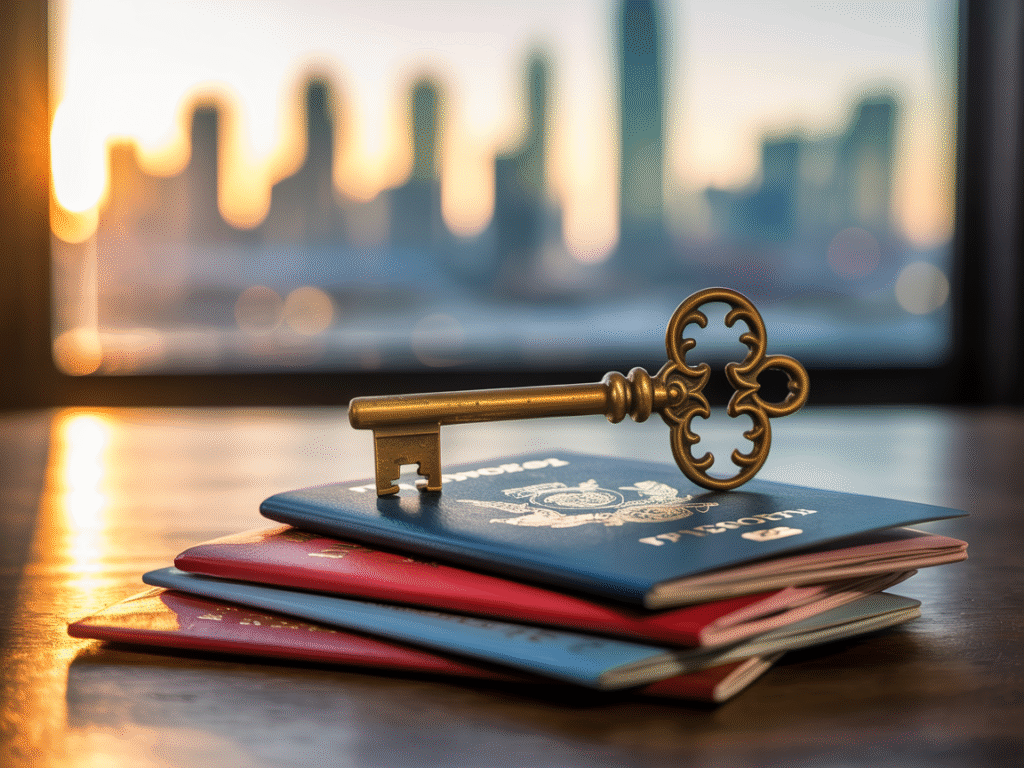
Hey there—if you’re reading this, chances are you’re dreaming about owning a home in your new country. And let me be real: it’s scary territory. You’re dealing with new systems, maybe no credit history, weird banks, and a TON of paperwork. I totally get it—I’ve been in your shoes, and so have many friends.
I’m not gonna hit you with technical jargon or mortgage mumbo jumbo. This is just honest talk—what I wish someone told me when I was starting. Let’s break it down, step-by-step, so you know what to expect and don’t feel lost.
1. Know What You’re Getting Into (And If It’s Even Possible)
First things first: different countries have different rules for non-residents. In the U.S., banks often want to see a Social Security number, LPR status, or maybe even citizenship. In Canada, you might need permanent residency plus proof of job and credit history. In Europe, rules can vary wildly between countries.
Real talk: Don’t assume you can just walk into a bank and get a mortgage. Start by looking up “mortgage for non-residents + [your country]” online. Country-specific forums, Reddit, or Facebook groups can give you the inside scoop.
2. Build (or Borrow) Credit
Banks want proof you can repay. But if you’ve just arrived, you probably don’t have any local credit history. That’s a challenge—but there are ways around it.
- Authorized user trick: Ask a trustworthy friend or family member to add you to their credit card as an authorized user. Their good payment history shows up on your credit report.
- Secured credit card: Put down a deposit—like $500—and get a card in return. Use it for gas or small bills, pay it off monthly, and boom—you start building credit fast.
- Alternative documents: Some banks accept proof of international credit, like credit references from your home country, or consistent rent and utility payment history.
Example: My friend Juan moved to Miami from Colombia. He had no U.S. credit. He got added to his uncle’s card, used a secured card, and was able to show six months of timely utility payments. That boosted his credit score enough to qualify for a small mortgage.
3. Save the Right Down Payment
Most banks like to see at least 20% down, but as a foreigner, they might ask for 25–30%, especially if they see higher risk.
Tip: Save more than you think—you’ll need extra for closing costs, insurance, and maybe taxes. In the U.S., closing costs alone can be 2–5% of the loan amount.
Real-life example: Sara, originally from Spain and now in Seattle, planned for a 20% down payment. But bank asked for 25% because she’d been in the country just a year. She had to delay her home purchase by six months to save more—and that panic saved her from getting denied later.
4. Choose the Right Lender
Don’t just walk into your local big bank—ask around, and shop your options.
- International banks (like HSBC or Santander) often have global lending products.
- Credit unions may have more flexible policies for non-citizens.
- Online lenders sometimes specialize in foreign applicants and have streamlined processes.
Tip: Talk to mortgage brokers who work with migrants and expats—they can offer insider help.
5. Organize Your Documents
Ojo con esto: you’ll need more documents than someone born locally. Common askers include:
- Passport + visa/residence permit
- Proof of income: pay stubs, employment letter
- Bank statements (usually 6–12 months)
- Tax returns (past 2 years, if available)
- Credit or reference letters from your home country
Real talk: Getting these in order is a bit of a project, but lenders appreciate it. A friend joked it felt like applying for citizenship again—but it keeps the process moving smoothly.

6. Consider Special Mortgage Programs
Many countries offer programs for first-time buyers or migrants:
- FHA loans in the U.S. —require 3.5% down and more relaxed credit criteria.
- First-time buyer programs (Canada) —like the Home Buyers’ Plan or provincial grants.
- Local immigrant initiatives —some cities offer forgivable down-payment loans to attract professionals.
Pro tip: Check with local housing agencies or nonprofits—they might save you a few thousand dollars.
7. Plan for Extra Costs
Buying a home means more than mortgage payments. Don’t forget:
- Home insurance
- Property taxes
- Maintenance and repairs
- Utilities and HOA fees (if applicable)
Example: The Ahmed family in Florida bought a lovely condo but didn’t budget HOA fees. Surprise—they paid $350 monthly on top of everything else! That lesson cost them a few late payments before their budget stabilized.
8. Think Long-Term—but Be Realistic
Ask yourself:
- How long do you plan to stay?
- Could you refinance once you have better credit?
- Are you okay with slightly higher rates now for the chance to refinance later?
Story: I got a 30-year fixed mortgage in 2022 with a 4.5% rate as a permanent resident. A year later, my credit score got better, and I refinanced to a 3.8% rate. My patience—and a small refinance fee—saved me tens of thousands over time.
9. Stay on Top of Currency Risk (If Relevant)
If you earn in one currency but borrow in another, currency fluctuation can affect your payment amounts.
Example: Eduardo moved from Argentina to New York and earned in USD. But he bought a home in Argentina with a USD-linked mortgage. When the peso tanked, his payments skyrocketed. Thankfully he had saved an emergency fund—but it was still a huge stress.
10. Don’t Do This Alone
Trust me: the home-buying process is intense, and when you’re already juggling migration stress, it can feel overwhelming. You don’t have to go it alone.
- Use a mortgage broker who specializes in expat or non-resident buyers
- Talk to immigrant housing nonprofits or local expat communities
- Get a good real estate agent who’s worked with migrants before and knows the pitfalls
Final Thoughts: You’re Building a Home and a Future
Look, getting a mortgage as a foreigner can feel like climbing Everest in flip-flops. But with a bit of planning, patience, and the right support, it’s 100% doable—and so worth it.
The path might be bumpier than for locals, but every step forward counts. Celebrate each milestone: credit built, documents gathered, lender approved, keys in hand.
Soon you’ll be settling into a home that’s truly yours—a place to belong. And that? That’s everything.
If you want help finding brokers, tools, or local programs in your country, just hit me up. I’m rooting for you all the way.
